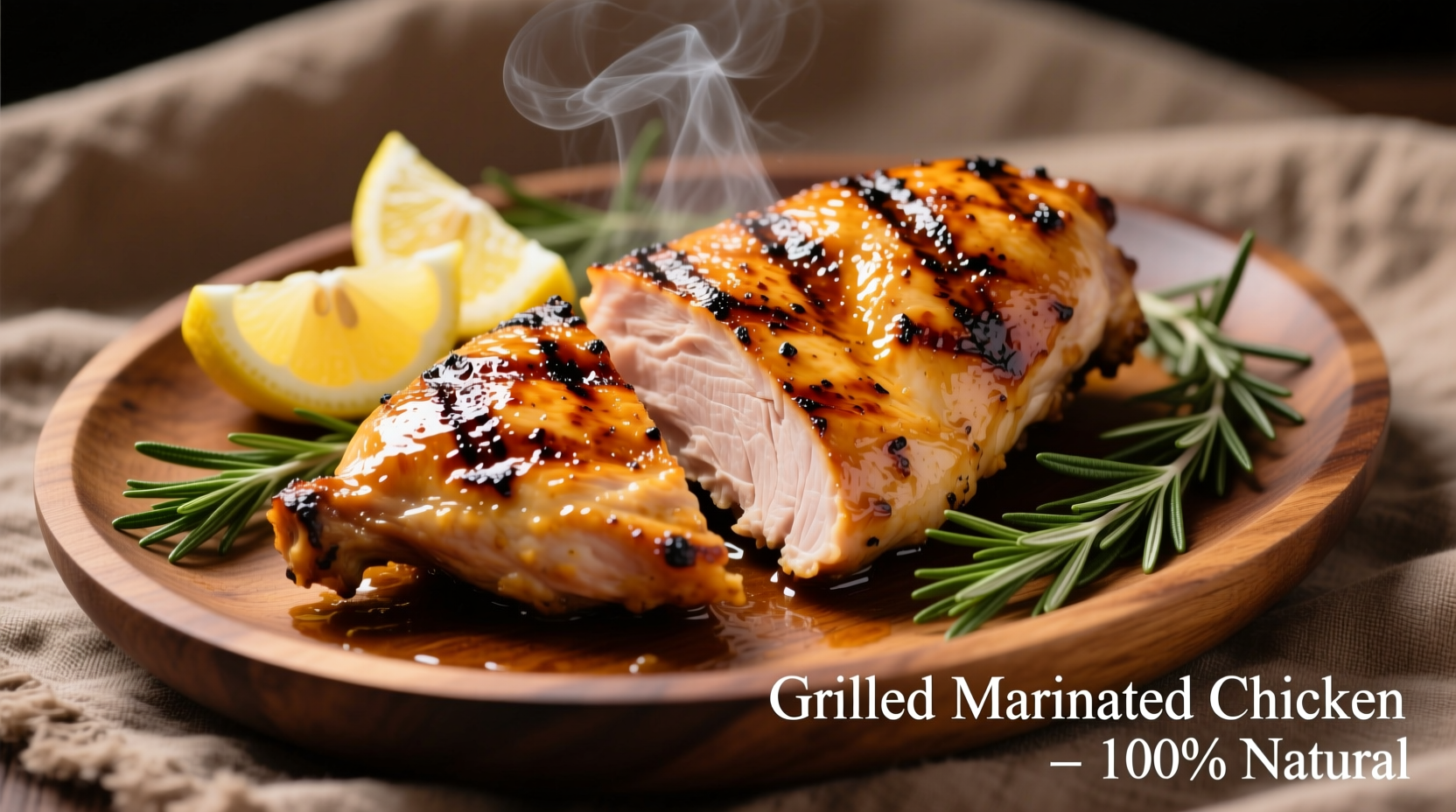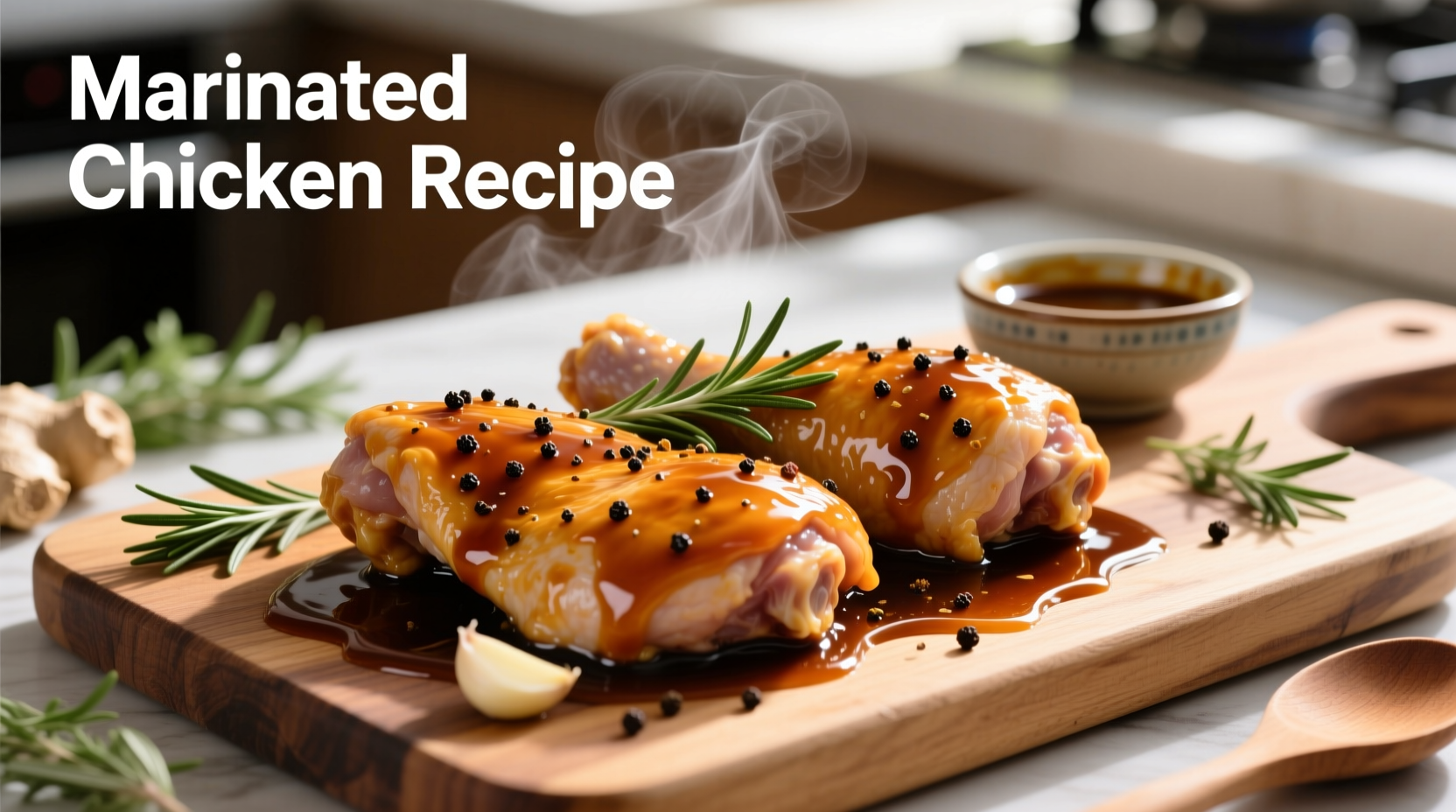Marinate chicken for 2-12 hours (never超过24 hours), then cook to an internal temperature of 165°F (74°C) using your preferred method. The perfect marinated chicken requires acid for tenderizing, oil for moisture, seasonings for flavor, and proper cooking technique to maintain juiciness without overcooking.
The Ultimate Guide to Cooking Perfect Marinated Chicken
Nothing beats the flavor and tenderness of properly cooked marinated chicken. Whether you're preparing a weeknight dinner or hosting a backyard barbecue, mastering this technique transforms ordinary chicken into an extraordinary meal. In this guide, you'll learn the science-backed methods professional chefs use to achieve consistently juicy, flavorful results every time.
Why Marinating Works: The Science Behind Flavor Infusion
Marinating isn't just about flavor—it's food science in action. The acid in marinades (like vinegar, citrus, or yogurt) gently breaks down muscle fibers, allowing flavors to penetrate while improving tenderness. Meanwhile, oil carries fat-soluble flavor compounds into the meat. However, over-marinating with highly acidic mixtures can make chicken mushy—a common mistake home cooks make.
According to food safety experts at the USDA Food Safety and Inspection Service, "Marinades containing acid can begin to break down meat proteins within 30 minutes, but optimal flavor penetration occurs between 2-12 hours depending on the cut and marinade composition."
Essential Components of a Perfect Chicken Marinade
Every successful marinade contains four critical elements working in harmony:
- Acid (lemon juice, vinegar, wine) - Tenderizes surface proteins
- Oil (olive, avocado, sesame) - Carries flavors and prevents drying
- Seasonings (herbs, spices, garlic) - Provides flavor depth
- Salt (soy sauce, kosher salt) - Enhances moisture retention
| Chicken Cut | Recommended Marinating Time | Acid Sensitivity |
|---|---|---|
| Boneless breasts | 2-4 hours | High (easily becomes mushy) |
| Bone-in pieces | 4-8 hours | Moderate |
| Thighs/Drumsticks | 6-12 hours | Low (can handle longer marination) |
| Whole chicken | 12-24 hours | Very low |
This marinating time guide reflects recommendations from the American Institute of Baking, which conducted extensive research on protein-marinade interactions. Notice how boneless breasts require the shortest marinating time due to their lean composition and high sensitivity to acid.
Step-by-Step: Preparing and Cooking Marinated Chicken
1. Preparation Essentials
Before you begin, gather these items:
- Non-reactive container (glass, ceramic, or food-grade plastic)
- Resealable plastic bags (for even coating and less mess)
- Meat thermometer (critical for food safety)
- Separate cutting boards for raw and cooked chicken
Never reuse marinade that's contacted raw chicken unless boiled for at least 2 minutes to kill bacteria—a food safety requirement emphasized by the FDA.
2. Creating Your Marinade
For a basic 2-pound chicken batch, combine:
- ½ cup acid (lemon juice, vinegar, or yogurt)
- ⅓ cup oil (olive, avocado, or sesame)
- 3 tablespoons seasoning blend (garlic, herbs, spices)
- 1½ teaspoons salt
- 1 tablespoon sweetener (honey, maple syrup - optional)
Whisk ingredients thoroughly before adding chicken. The sweetener helps with caramelization but isn't essential for the marinating process itself.

3. Marinating Process
- Place chicken in container or bag
- Pour marinade over chicken, ensuring full coverage
- Remove air from bags or cover containers tightly
- Refrigerate at 40°F (4°C) or below during marination
- Rotate chicken occasionally for even exposure
Remember: Never marinate at room temperature. The USDA Food Safety and Inspection Service states, "Marinating at room temperature allows harmful bacteria to multiply rapidly in the 'danger zone' between 40°F and 140°F."
4. Cooking Methods Compared
Different cooking techniques yield distinct results. Choose based on your desired outcome:
- Grilling (high heat, 400-450°F): Best for charred exterior and smoky flavor. Cook boneless breasts 6-8 minutes per side.
- Baking (medium heat, 375°F): Most consistent results for beginners. Bake breasts 20-25 minutes.
- Pan-searing (medium-high heat): Creates perfect crust. Sear breasts 5-6 minutes per side.
- Broiling (high heat from above): Excellent for quick cooking. Watch carefully to prevent burning.
5. The Critical Final Step: Temperature Check
Regardless of cooking method, always verify doneness with an instant-read thermometer. Insert into the thickest part of the chicken, avoiding bone:
- White meat (breasts): 160-165°F (71-74°C)
- Dark meat (thighs): 170-175°F (77-79°C)
Remove chicken from heat when it reaches 160°F for breasts or 165°F for thighs—it will continue cooking to the safe temperature during resting. This technique prevents the common mistake of overcooking that leads to dry chicken.
Avoiding Common Marinated Chicken Mistakes
Even experienced cooks make these errors that compromise results:
- Over-marinating: Acidic marinades beyond 12 hours make chicken mushy
- Skipping resting time: Cutting immediately releases precious juices
- Using same marinade for basting: Creates cross-contamination risk
- Cooking straight from fridge: Causes uneven cooking (let sit 20 minutes at room temp)
- Overcrowding cooking surface: Steams instead of sears chicken
Professional chefs at the Culinary Institute of America emphasize that "allowing marinated chicken to rest for 5-10 minutes after cooking is non-negotiable for maximum juiciness—it allows juices to redistribute throughout the meat."
Flavor Variations: Global Marinade Inspirations
Expand your culinary repertoire with these authentic regional approaches:
- Mediterranean: Olive oil, lemon, garlic, oregano, and paprika
- Asian: Soy sauce, ginger, sesame oil, rice vinegar, and honey
- Latin American: Citrus juice, cumin, garlic, and chipotle peppers
- Indian: Yogurt, ginger, garlic, turmeric, and garam masala
When adapting international recipes, note that traditional cooking methods often differ. For example, Indian tandoori chicken uses yogurt-based marinades cooked at extremely high temperatures in clay ovens—a technique difficult to replicate perfectly at home but adaptable with broiling.
Food Safety First: Critical Guidelines
Following proper food safety practices is non-negotiable when handling poultry. The Centers for Disease Control and Prevention reports that "chicken is a leading cause of foodborne illness, with Salmonella and Campylobacter being the most common pathogens."
Essential safety practices:
- Always marinate in the refrigerator (never at room temperature)
- Use separate cutting boards for raw chicken and other ingredients
- Wash hands thoroughly after handling raw poultry
- Never reuse marinade that contacted raw chicken without boiling
- Cook to proper internal temperatures (165°F for breasts)
Perfect Results Every Time: Pro Tips
Implement these professional techniques for consistently excellent results:
- Poke holes in thicker cuts to allow deeper marinade penetration
- Add oil after marinating for better searing (pat dry first)
- Reserve some fresh marinade for serving (before adding to chicken)
- Use room temperature chicken for more even cooking
- Rest cooked chicken 5-10 minutes before slicing
Remember that the best marinated chicken balances flavor, texture, and safety. By understanding the science behind marination and following proper cooking techniques, you'll achieve restaurant-quality results at home.











 浙公网安备
33010002000092号
浙公网安备
33010002000092号 浙B2-20120091-4
浙B2-20120091-4